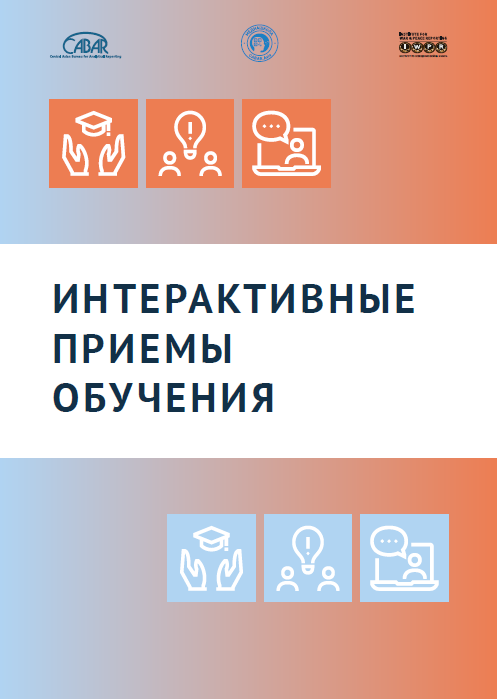Interactive Techniques

This manual has been translated into Russian from English by the Representative Office of the Institute for War and Peace Reporting in Central Asia, on the basis of a Creative Commons BY-NC-SA license (use and revision on a non-commercial basis is allowed, with reference to the original authorship and a similar CC license).
Media School CABAR.asia recommends this manual to teachers of journalism faculties and media trainers. The manual can also be useful for a wide range of readers.
These techniques have multiple benefits: the instructor can easily and quickly assess if students have really mastered the material (and plan to dedicate more time to it, if necessary), and the process of measuring student understanding in many cases is also practice for the material—often students do not actually learn the material until asked to make use of it in assessments such as these. Finally, the very nature of these assessments drives interactivity and brings several benefits. Students are revived from their passivity of merely listening to a lecture and instead become attentive and engaged, two prerequisites for effective learning. These techniques are often perceived as “fun”, yet they are frequently more effective than lectures at enabling student learning.
Not all techniques listed here will have universal appeal, with factors such as your teaching style and personality influencing which choices may be right for you.
Adapted in part from:
- Angelo, Thomas/K. Patricia Cross, Classroom Assessment Techniques. 2nd Edition. Jossey-Bass: San Francisco, 1993.
- Morrison-Shetlar, Alison/Mary Marwitz, Teaching Creatively: Ideas in Action. Outernet: Eden Prairie, 2001.
- McGlynn, Angela, Successful Beginnings for College Teaching. Atwood: Madison, 2001.
- Silberman, Mel. Active Learning: 101 Strategies to Teach Any Subject. Allyn and Bacon: Boston, 1996.
- VanGundy, Arthur. 101 Activities for Teaching Creativity and Problem Solving. Pfeiffer: San Francisco, 2005.
- Watkins, Ryan. 75 e-Learning Activities: Making Online Learning Interactive. San Francisco: Pfeiffer, 2005.
The manual was translated into Russian and designed for Media School CABAR.asia within the framework of the project "Development of new media and digital journalism in Central Asia"
[su_document url="https://school.cabar.asia/wp-content/uploads/2020/10/interactive-learning_12-10.pdf" width="460" height="480"]


